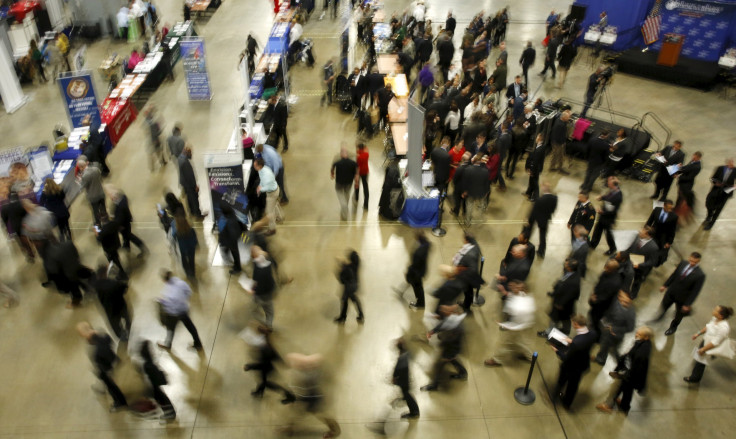US Job Market Firming Despite Anemic Economic Growth

The number of Americans filing for unemployment benefits fell more than expected last week, suggesting the labor market continued to strengthen despite tepid economic growth. Initial claims for state unemployment benefits declined 9,000 to a seasonally adjusted 267,000 for the week ended April 2, the Labor Department said on Thursday.
“The persistently low level of claims should provide some reassurance that the economy is growing, even if that growth appears more sluggish that most would have hoped a few months ago,” said Jim Baird, chief investment officer at Plante Moran Financial Advisors in Kalamazoo, Michigan.
Economists had forecast claims slipping to 270,000 in the latest week. Jobless claims have now been below 300,000, a threshold associated with healthy labor market conditions, for 57 weeks, the longest stretch since 1973.
The labor market buoyancy is at odds with slowing economic growth. Recent data on consumer spending, business investment and international trade suggest growth slowed to below a 1 percent annualized rate in the first quarter after expanding at an anemic 1.4 percent pace in the fourth quarter.
With the strengthening labor market drawing in discouraged and new job seekers, which is likely to keep wage growth moderate, it is unlikely the Federal Reserve will shift from its policy of gradually raising interest rates.
The dollar was little changed against a basket of currencies after the claims data. U.S. stocks were trading lower, tracking falling oil prices, while U.S. Treasury debt prices rose.
More Job Seekers
Government data last week showed about 2.4 million people entered or re-entered the job market between September and March, the second-largest increase in the labor force over a six-month period on record. Fed Chair Janet Yellen has argued that hidden labor market slack was restraining wage growth.
Fed officials last month downgraded their economic growth expectations and forecast only two more rate rises this year. The U.S. central bank raised its benchmark overnight interest rate in December for the first time in nearly a decade.
Minutes of the Fed’s March 15-16 policy meeting published on Wednesday suggested the central bank was unlikely to hike rates before June.
Last week, the four-week moving average of claims, considered a better measure of labor market trends as it irons out week-to-week volatility, rose 3,500 to 266,750.
“The labor market is on a solid footing. Layoffs are low, hiring is good, and workers who do lose their jobs are finding new ones quickly,” said Gus Faucher, deputy chief economist at PNC Financial in Pittsburgh.
Employers added 215,000 jobs in March, on top of the 245,000 positions created in February, the government reported last week. An increase in the labor force lifted the unemployment rate one-tenth of a percentage point to 5 percent.
A report on Tuesday showed hiring by U.S. employers surged in February to the highest level since November 2006. Nearly 3 million people voluntarily quit their jobs in February.
“The fears of world economic growth [slowing] are not causing a concern for business owners here in the U.S. with all the help wanted signs up in the windows,” said Chris Rupkey, chief economist at MUFG Union Bank in New York.
© Copyright Thomson Reuters 2024. All rights reserved.







